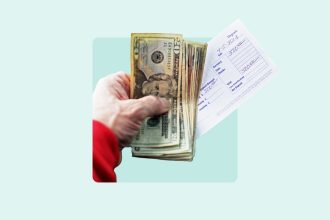Key takeaways
- Refinancing may allow you to save money on interest or lower your monthly payment.
- Choose to refinance when interest rates have dropped or your credit has improved.
- Avoid refinancing if you are upside down on your auto loan.
- Check lender requirements to confirm you — and your vehicle — qualify for refinancing.
If it saves you money on interest, auto loan refinancing is generally a good idea. That said, the best time to refinance depends on the market, your finances, the state of your loan and the car itself.
The process of refinancing an auto loan involves swapping your current loan for a new one with different terms. If interest rates are low — or your finances have improved — then refinancing might be the right choice.
However, refinancing is not always a wise financial move. If interest rates are high or you’re close to paying off your loan, then it may make more sense to stick with your current auto loan.
When should you refinance your car?
There are multiple benefits to refinancing and quite a few situations where refinancing makes the most sense. If it saves you money on interest or helps reduce your monthly payment, refinancing your car loan may be a good option.
1. When rates have dropped since your last auto loan
Refinancing is a good move when average rates are low. Unfortunately, auto loan rates have steadily risen throughout 2023 and into 2024. Our experts forecast that rates may cool off slightly for good-credit borrowers but generally remain elevated through 2024.
This is because auto loan refinancing rates tend to track with used vehicle rates, which currently average 11.91 percent, according to data from Experian. However, Bankrate’s data shows that the car loan rates for a 48-month loan haven’t changed significantly in months.
So while rates may not see big drops in the near future, you may still be able to lower your payments if the current rates are lower than what you borrowed initially.
2. When your credit score and DTI have improved
Even if market rates haven’t changed drastically, improving your credit score may be enough to get a lower rate. You may also qualify for better loan terms, reducing your monthly payment and overall costs.
Here are the average interest rates for each credit score, according to Experian’s first-quarter 2024 data:
| Personal FICO score | Average interest rate for used car loans |
|---|---|
| 781 to 850 | 6.80% |
| 661 to 780 | 9.04% |
| 601 to 660 | 13.72% |
| 501 to 600 | 18.97% |
| 300 to 500 | 21.57% |
A lower debt-to-income ratio (DTI) can also result in better rates. Pay down any existing debt and calculate your DTI to determine where you land ahead of refinancing.
3. When you received your initial loan from the dealer
Dealers tend to charge higher rates than banks and credit unions to make a profit. If you took out your initial loan through dealer-arranged financing, refinancing with a different lender could get you a lower rate.
Bankrate tip
Use a car loan refinance calculator before deciding if you can secure better rates and terms than your dealership loan.
4. When you’re struggling to keep up with payments
Refinancing a car loan can sometimes get you a more affordable car payment even without a lower interest rate. If your budget is tight and you need to reduce your car payment, you could refinance your loan to a longer repayment term.
Be careful with this option, though. You will pay more interest when you extend your loan. It can be a good short-term solution, but consider putting more toward your monthly payment to reduce your overall cost.
5. When you have positive equity in your car
Lenders view positive equity — cars worth more than you owe — as a big plus when refinancing. This is largely because the lender stands to make more if you default and it repossesses your vehicle to sell. Since the lender is taking on less risk, it may offer you a lower interest rate.
You can estimate your car’s value on websites like Edmunds or Kelley Blue Book. Once you have an estimate, divide the number by your outstanding balance to determine if you have positive equity.
For example, if your car’s value is $20,000 and your remaining balance is $15,000, your loan-to-value ratio is 75 percent. That means you have 25 percent equity in your car.
6. When you have issues with your current lender
Not every lender will work with you when facing financial or other issues. Even small matters can snowball into an unpleasant situation. Refinancing to a lender with good customer service reviews may save you from a headache and provide potential savings on interest.
However, even longstanding problems may not mean it’s time to refinance. If a prepayment penalty is attached to your current loan, it may cost more to refinance than you would save.
Bankrate tip
You can refinance your car loan multiple times, but it may be difficult if you have a low balance or don’t have much time left on your loan.
When to not refinance your car
Refinancing a car loan isn’t always the right choice in situations where you don’t stand to save any money, might not meet refinance requirements or end up with worse terms. In this case, refinancing and paying off your car loan early may not be the best decision.
1. When you’re close to paying off your loan
If you are nearing the end of your loan term, refinancing may not save you money. Instead, you should stick with it unless you desperately need to extend your loan term to reduce your monthly payment.
Most lenders also have a minimum loan term of 24 or 36 months. If you have fewer months than that remaining on your car loan, you may have to extend your term when you refinance. Be wary. While a longer loan term will mean a lower monthly payment, you will also pay more interest.
Your remaining loan balance also matters. Lenders set a minimum balance for refinancing, typically between $3,000 to $7,500. If you owe less than the lender’s minimum balance, it is unlikely that you will qualify. And while cash-out refinancing does exist, it can be hard to find a lender that offers it.
2. When you owe more than the car is worth
The further you are in the loan, the more likely you owe more on the car than it is worth. This is also called being “underwater” or upside down — and it will make it hard to refinance. Since your car secures your loan, lenders know they won’t be able to recoup the loan’s full amount if you default while upside-down.
This is the opposite of having positive equity in your car. So while you may be able to refinance, you should determine if it will actually save you money. If it won’t — or you just break even — refinancing may not be your best option.
Bankrate tip
Don’t refinance a vehicle you can’t afford. Reassess your budget to see where you may be overextending and calculate expected costs before signing off on a new loan.
3. When interest rates are high
You may pay more if you refinance in the current market environment.
The Federal Reserve has been working to control inflation by keeping a high federal funds rate, which in turn causes interest rate increases on everything from credit cards to car loans. The average APR for used vehicles was 11.91 percent as of 2024’s first quarter, according to Experian. This is considerably higher than the same time in 2022, where the average APR was just 8.64 percent.
If you took out your auto loan when rates were low, it may be difficult to find a better rate.
4. When your car doesn’t meet lender requirements
Lenders determine eligibility differently. Before you refinance, check the requirements for you, your vehicle and your current loan. Most lenders will require:
- A regular source of income, a low debt-to-income ratio and good credit.
- Proof of residence, such as a lease agreement, mortgage statement or utility bill.
- Your car’s make, model, year, vehicle identification number (VIN) and mileage to evaluate your car’s worth.
- Your loan’s current balance, monthly payment and payoff amount to determine if you meet its minimum loan requirements.
Finally, the car should be no more than 10 years old — some lenders limit the maximum age to eight — and the mileage should not exceed 100,000 or 150,000 miles, depending on the lender.
Bankrate tip
You can find specific refinancing requirements on lenders’ websites or Bankrate’s auto loan lender reviews.
5. When fees will outweigh your savings
Before refinancing, consider whether fees will impact your overall savings. If your auto loan has a prepayment penalty, paying off your loan early can cost you. You will need to weigh the amount you save in interest over the cost of the prepayment penalty to determine if refinancing will actually save money.
Some lenders may also charge a substantial origination fee when you refinance. Like a prepayment penalty, it can eat into the potential savings and make refinancing more of a hassle than just sticking with your current lender.
Both your old and new lender may charge transaction fees, covering administrative or processing costs for terminating the old loan and starting the new loan agreement. You may be able to negotiate these fees. Some states will charge you state registration and title transfer fees for re-registering your car after refinancing.
Alternatives to refinancing
If refinancing is too expensive, you still have options. You could be better off requesting a car loan modification with your lender if your car payments are stretching your budget too thin or you’re experiencing financial hardship.
You may want to consider swapping to a less expensive vehicle to take off some of the financial burden. This can be either trading in your car for a less expensive model or selling your car privately and buying a less expensive vehicle.
Switching over to leasing could also help you save on monthly payments, but it may cost more over the long term. This is because leasing still requires a down payment, interest and fees. On top of the usual costs, you won’t own the vehicle at the end of the lease period. You can certainly choose to buy it — but that will come with additional costs.
The bottom line
The primary reason to consider refinancing is if you can qualify for a lower rate and will save money, either monthly or overall. Consider how long you have on a loan before getting started.
If refinancing makes sense for your situation, get the refinancing process started by checking your credit score. Prequalify with at least three lenders to see what interest rates you qualify for without hurting your credit score. Then run the numbers to determine if your savings outweigh the costs.
Read the full article here














